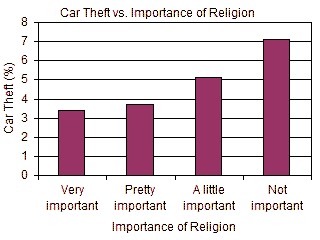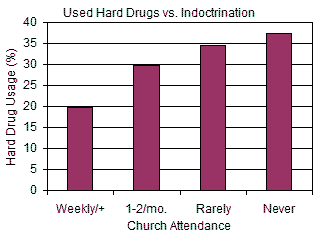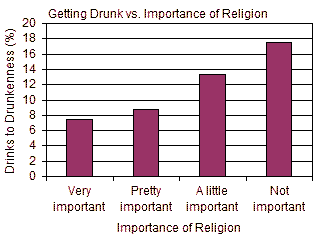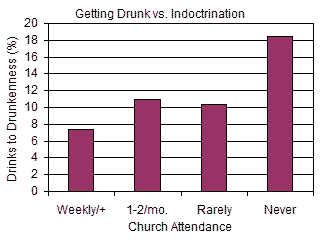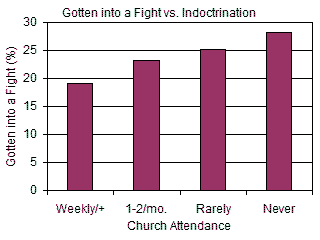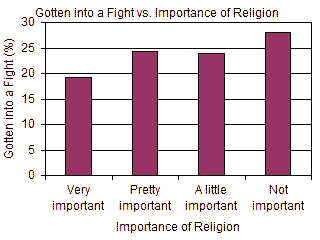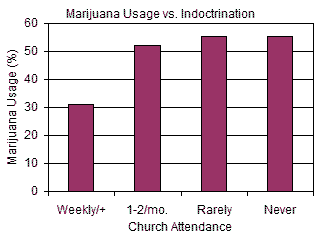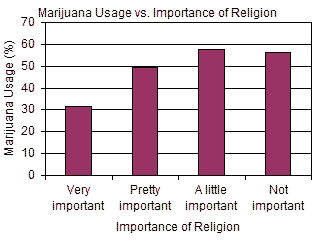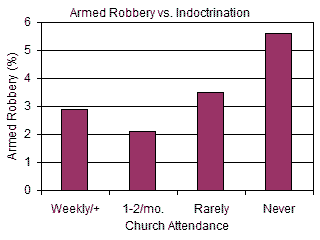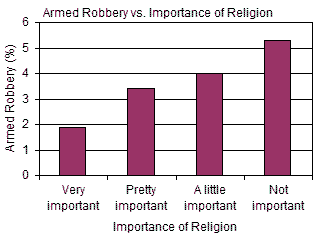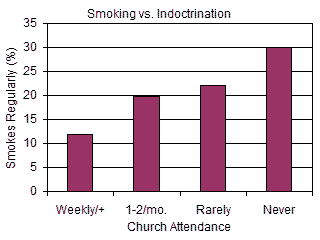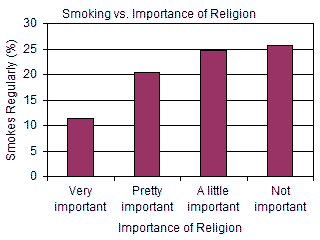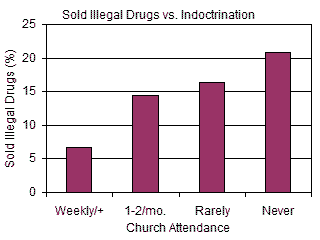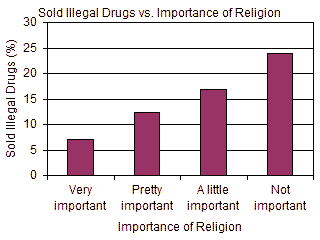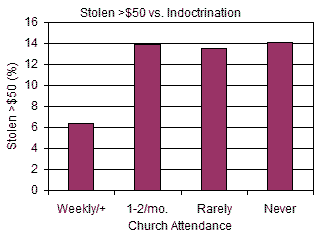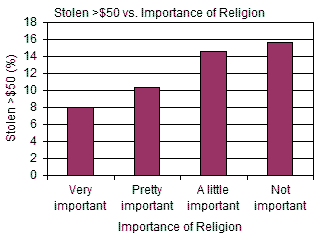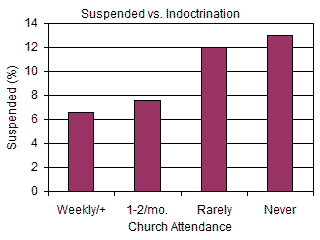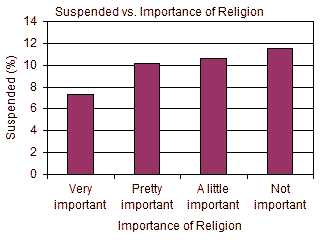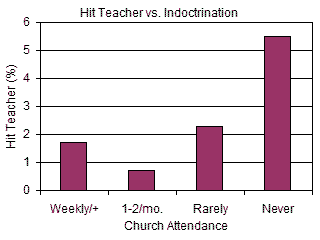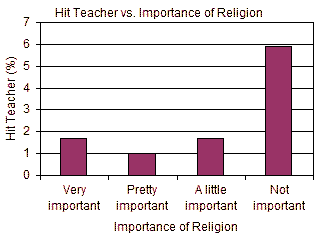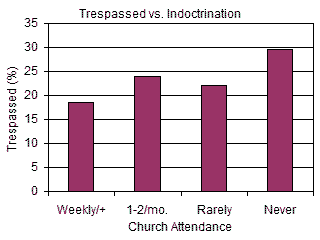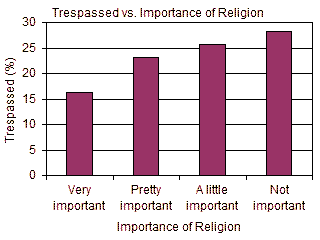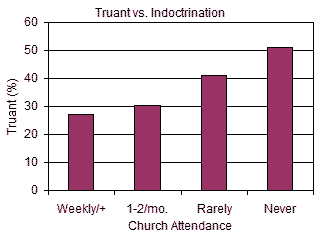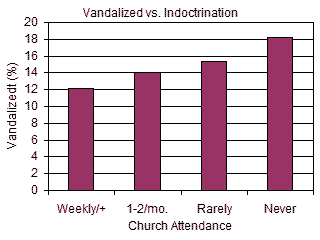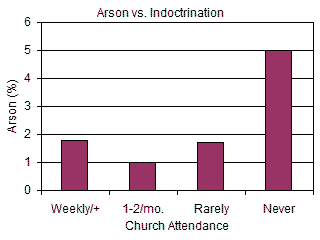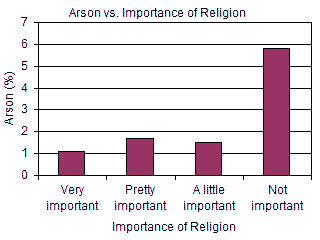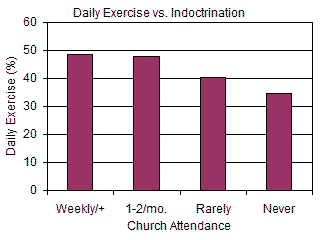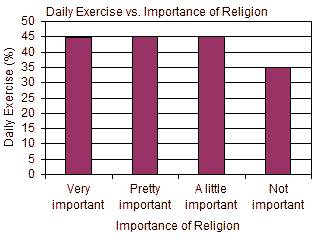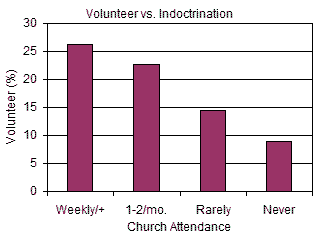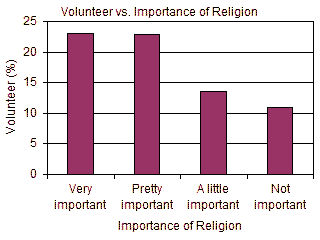Is the Teaching of Religion Really a Form of Child Abuse?

Introduction
In The God Delusion and other writings,1 Richard Dawkins claims that teaching children about religion (specifically, the doctrine of hell) is a form of child abuse that scars children for life. Accordingly, Dawkins states, "Priestly groping of child bodies is disgusting. But it may be less harmful in the long run than priestly subversion of child minds."1 Conspicuously absent in his writings are any published studies documenting that teaching children religious principles might adversely affect them. Since Dawkins claims to always rely upon science as the basis for his beliefs, why didn't he cite any science in support of his claims?
Effects of physical child abuse
Child abuse is a serious charge, and the physical abuse of children impacts their lives adversely in many different ways. Published studies show that physical abuse negatively impacts their mental health,2 providing additional risks for psychopathology,3 increased suicidal behaviors,4 eating disorders,5 depression,6 delinquency and criminal behaviors,7 and alcohol abuse.8 Impairment cause by child abuse produces life-long consequences for the individual and for society as a whole, which must deal with these unfortunate people.
Religion as child abuse
In one of the largest studies of its kind, the University of North Carolina at Chapel Hill examined the role of religion in the lives of nearly 2500 adolescents.9 The adolescents indicated the level of their indoctrination (i.e., frequency of church attendance) and importance of religion, along with a number of activities that they have or have not participated in. Listed below are graphs of behaviors that would generally be considered to be unfavorable. To see larger versions of the graphs, just hover your cursor over the thumbnail image.
These data show that religiously indoctrinated youth are much less
involved with illegal substances, alcohol abuse, criminal and violent
activities, and have fewer problems in school. Dawkins's hypothesis that religious indoctrination is bad for children
has been soundly falsified. In fact, those who never attend church or feel that
religion is not important display far more symptoms of real child abuse than those
who are subject to frequent religious indoctrination.
Below are some positive behaviors plotted as a function of church attendance and importance of religion.
These graphs show that those whose minds have been "subverted" by the
"evils"
of religion exercise more frequently and volunteer more to help in their
communities. It would indeed be a strange outcome that "child abuse" would cause
youths to behave in this manner.
Religion and happiness
Not only do children of religious people behave better than their irreligious peers, but they are also happier. A study from the University of British Columbia found, "Children who were more spiritual were happier. Spirituality accounted for between 3 and 26% of the unique variance in children’s happiness depending on the measures."10
Does theism lead to real child abuse?
 Within the last few years there have been numerous reports of child
molestation committed by clergy of the Roman Catholic Church. The complaints
have been so numerous that many people assume that religious people commit
child abuse at a higher rate than the population at large. When I was
growing up there were numerous newspaper articles about molestations within
the Boy Scouts. Let's face it, if you want to molest boys, what better place
to go? However, the Boy Scouts changed their policies so that adult leaders
are never allowed to be alone with the boys. Leadership in the Boy Scouts
must always be at least two deep. Since they instituted that policy, there
have been almost no cases of molestation. Did being a Boy Scout leader cause
one to want to molest boys? Or was it just a good venue for getting access?
The Roman Catholic Church hasn't quite figured it out yet. If they
instituted the two deep leadership policy for all adult/child interactions,
their problem would almost completely disappear, as well. Molesters will go
where their targets are easily accessible - it has nothing to do with
religion. I used to be an atheist. Now that I am a Christian, I don't
suddenly feel drawn to molest boys!
Within the last few years there have been numerous reports of child
molestation committed by clergy of the Roman Catholic Church. The complaints
have been so numerous that many people assume that religious people commit
child abuse at a higher rate than the population at large. When I was
growing up there were numerous newspaper articles about molestations within
the Boy Scouts. Let's face it, if you want to molest boys, what better place
to go? However, the Boy Scouts changed their policies so that adult leaders
are never allowed to be alone with the boys. Leadership in the Boy Scouts
must always be at least two deep. Since they instituted that policy, there
have been almost no cases of molestation. Did being a Boy Scout leader cause
one to want to molest boys? Or was it just a good venue for getting access?
The Roman Catholic Church hasn't quite figured it out yet. If they
instituted the two deep leadership policy for all adult/child interactions,
their problem would almost completely disappear, as well. Molesters will go
where their targets are easily accessible - it has nothing to do with
religion. I used to be an atheist. Now that I am a Christian, I don't
suddenly feel drawn to molest boys!
Conclusion 
Richard Dawkins's hypothesis that religious teaching of children is a form of child abuse is shown to be scientifically unsupported. In fact, the scientific data shows that exactly the opposite - that adolescents who receive frequent religious instruction behave more appropriately and are better adjusted to adult life in society compared to their non-religious peers. In addition, those children are also happier. Richard Dawkins's own writings indicate that he himself was the victim of sexual abuse from a priest.1 Of course he would be angry at the religious authority who abused his power for evil purposes. Maybe this is why Dawkins is so adamant in his opposition to religious belief. However, making up the obviously failed hypothesis that religious instruction amounts to child abuse is not going to convince any except the extremely na�ve. Scientific data shows that teaching children the moral principles of religion has a positive impact on their behavior, as would be expected intuitively.
Train up a child in the way he should go, Even when he is old he will not depart from it. (Proverbs 22:6)
Related Pages 
References 
- 'Religion's Real Child Abuse' by Richard Dawkins - RichardDawkins.net
- Johnson, Kotch, Catellier, and Winsor. 2002. Adverse Behavioral and Emotional Outcomes From Child Abuse and Witnessed Violence. Child Maltreatment, 7: 179-186.
- Kaplan, Pelcovitz, Salzinger, Weiner, Mandel, Lesser, and Labruna. 1998. Adolescent Physical Abuse: Risk for Adolescent Psychiatric Disorders. American Journal of Psychiatry, 155: 954-959.
- Kaplan, Pelcovitz, Salzinger, Mandel, Weiner, and Labruna. 1999. Adolescent Physical Abuse and Risk for Suicidal Behaviors. Journal of Interpersonal Violence, 14: 976-988.
- Ackard, Neumark-Sztainer, Hannan, French, and Story. 2001. Binge and Purge Behavior Among Adolescents: Associations With Sexual and Physical Abuse in a Nationally Representative Sample: The Commonwealth Fund Survey. Child Abuse and Neglect, 25:771-785.
- Holmes and Sammel. 2005. Brief Communication: Physical Abuse of Boys and Possible Associations With Poor Adult Outcomes. Annals of Internal Medicine, 143: 581-586.
- Lansford, Miller-Johnson, Berlin, Dodge, Bates, and Petit. 2007. Early Physical Abuse and Later Violent Delinquency: A Prospective Longitudinal Study. Child Maltreatment 12: 233-245.
- Afifi, Brownridge, Cox, and Sareen. 2006. Physical Punishment, Childhood Abuse and Psychiatric Disorders. Child Abuse and Neglect: The International Journal, 30: 1093-1103.
- Christian Smith and Robert Faris. 2002. Religion and American Adolescent Delinquency, Risk Behaviors and Constructive Social Activities. National Study of Youth and Religion. The University of North Carolina at Chapel Hill.
- Holder, M. D., B. Coleman, and J. M. Wallace. 2008. Spirituality, Religiousness, and Happiness in Children Aged 8–12 Years. J Happiness Stud DOI 10.1007/s10902-008-9126-1.
http://www.godandscience.org/apologetics/religion_as_child_abuse.html
Last Modified June 14, 2010

